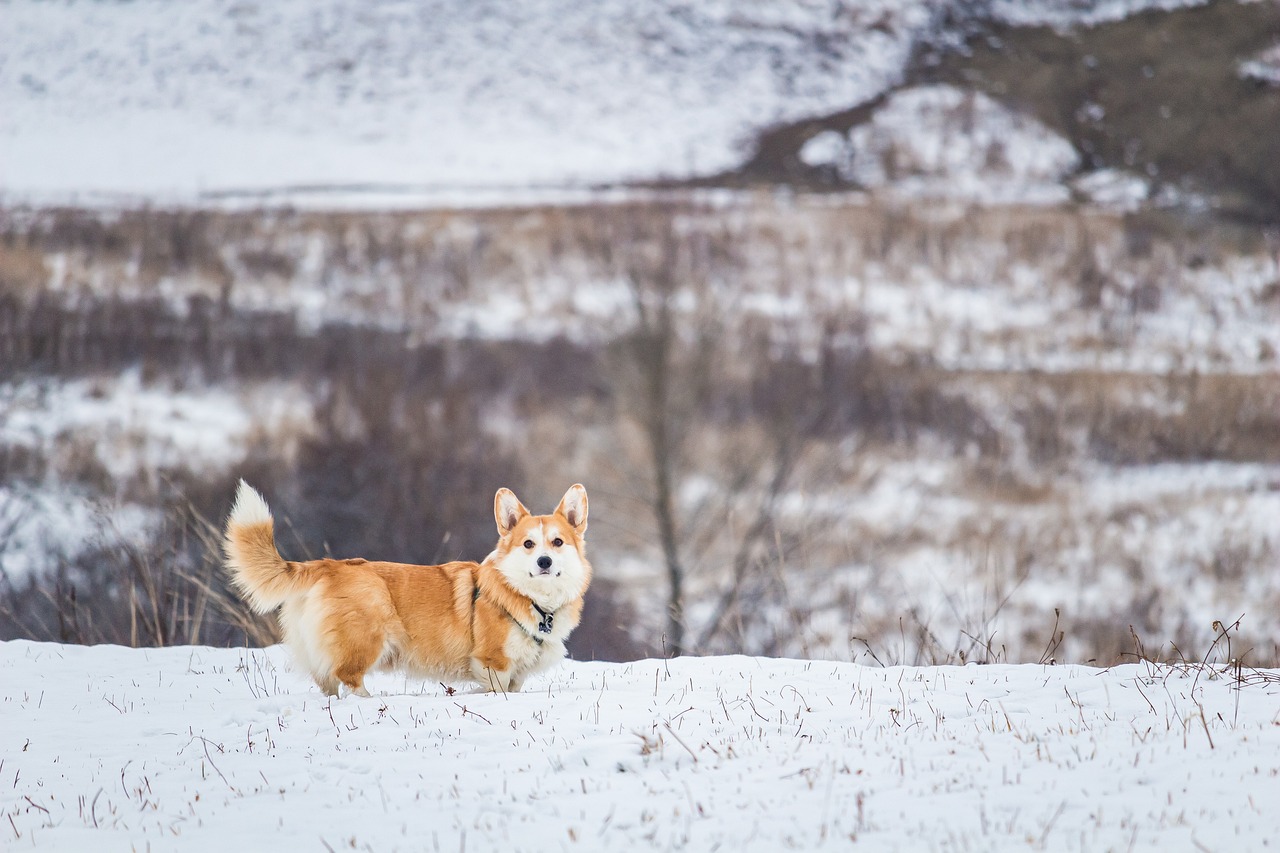This article delves into the fascinating world of guard dog breeds celebrated for their powerful bites. These dogs not only provide protection but also exhibit unique characteristics that make them suitable for various protective roles. Understanding their traits, training requirements, and overall suitability can help potential owners make informed decisions.
1. Rottweiler
Rottweilers are renowned for their strength and loyalty, making them one of the most effective guard dogs. Their bite force is among the highest in dog breeds, providing formidable protection for families and properties.
2. German Shepherd
German Shepherds are versatile working dogs known for their intelligence and strong bite. They excel in various roles, including police and military service, thanks to their protective instincts.
- History of German Shepherds: Developed in the late 19th century, their lineage contributes to their strong bite and protective nature.
- Training for Protection: Proper training is essential for harnessing a German Shepherd’s protective instincts, ensuring they respond appropriately to threats.
3. American Pit Bull Terrier
Often misunderstood, American Pit Bull Terriers possess a powerful bite and a loyal disposition, making them excellent guard dogs when trained properly. With a bite force of approximately 235 PSI, they are among the strongest breeds suitable for guarding.
4. Doberman Pinscher
Doberman Pinschers are known for their loyalty and intelligence. Their bite force and protective instincts make them ideal for guarding homes and families.
- Characteristics: Agile and alert, Dobermans have a natural instinct to protect their owners.
- Socialization and Training: Early socialization is crucial for developing a balanced temperament.
5. Bullmastiff
Bullmastiffs are powerful and protective dogs with a strong bite force, making them excellent guard dogs for homes and properties. They can reach up to 1,000 PSI in bite force, providing a significant deterrent to intruders.
6. Belgian Malinois
These agile and intelligent dogs are often used in police and military roles. Their strong bite and quick response make them exceptional guard dogs.
7. Akita
Known for their loyalty and protective nature, Akitas have a powerful bite that makes them effective guardians for families. Proper training is key to ensuring they can protect their families while remaining well-adjusted companions.
8. Cane Corso
Cane Corsos are large, muscular dogs with a powerful bite, making them excellent guardians. Their protective nature and loyalty are highly valued.
9. Boxer
Boxers are playful yet protective dogs with a strong bite force, making them excellent family guardians while being affectionate companions.
10. Great Dane
Despite their gentle nature, Great Danes possess a strong bite and serve as effective guard dogs due to their size and presence.
11. Newfoundland
Newfoundlands are known for their gentle nature and powerful bite. They can serve as effective guardians while being loving family pets.
12. Conclusion
Choosing the right guard dog involves understanding their strengths, training needs, and suitability for your family. Each breed offers unique qualities that can provide protection and companionship.
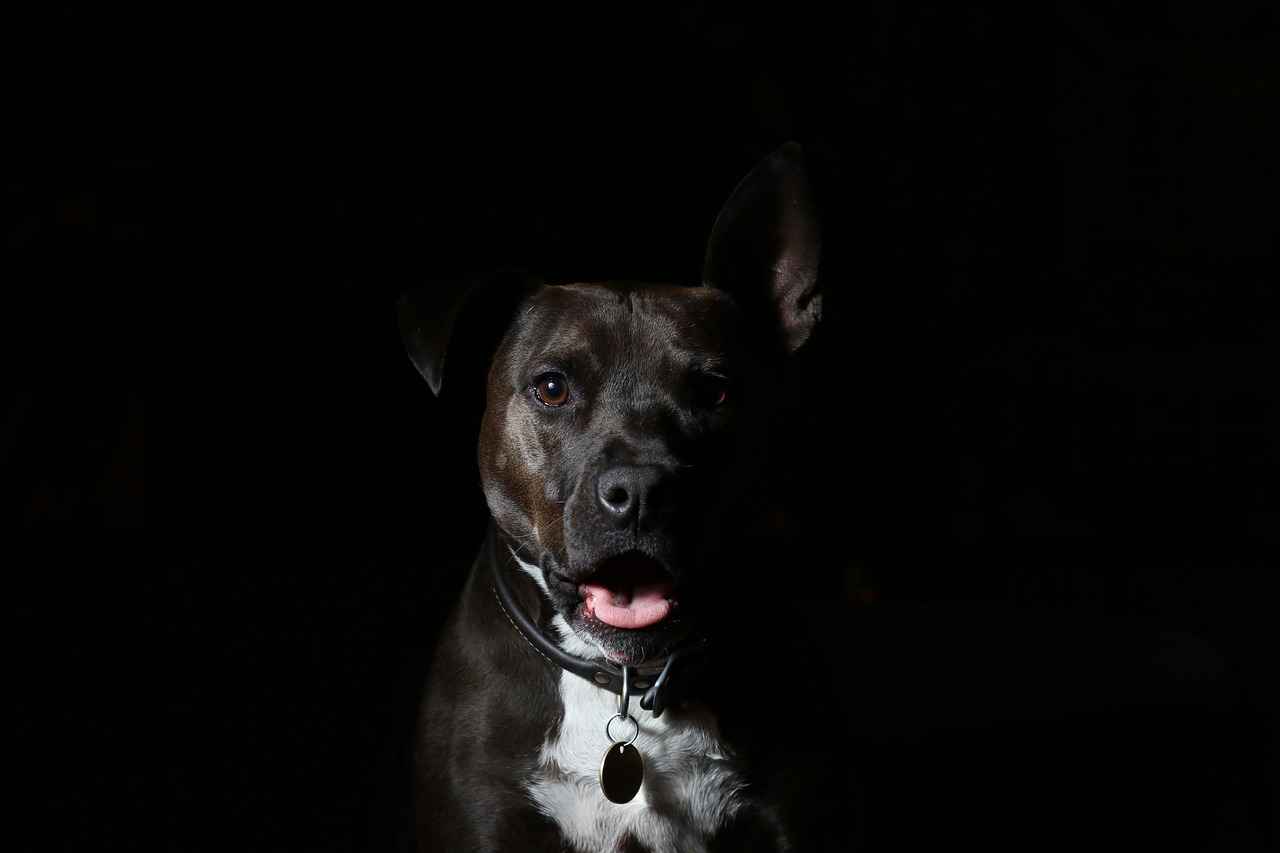
1. Rottweiler
Rottweilers are not just renowned for their impressive physical strength, but they also exhibit a remarkable level of loyalty that makes them one of the most effective guard dogs available today. With a bite force that ranks among the highest in all dog breeds, Rottweilers provide a formidable line of defense for homes and families.
Originally bred to drive cattle and pull carts, Rottweilers have evolved into exceptional protectors. Their strong build and powerful jaws enable them to deliver a bite force of approximately 328 PSI, making them one of the most powerful breeds in terms of bite strength. This natural capability, combined with their intelligence and trainability, allows them to excel in various protective roles.
- Temperament: Rottweilers are known for their confident and fearless nature, which is essential for a guard dog. They are protective of their families and can be wary of strangers, making them excellent watchdogs.
- Training: Proper training is crucial for Rottweilers. Early socialization and consistent obedience training help them develop a balanced temperament, ensuring they can differentiate between real threats and normal situations.
- Family Companions: Beyond their guarding abilities, Rottweilers can be affectionate family pets. They form strong bonds with their owners and are known to be great with children when properly socialized.
In conclusion, Rottweilers are a top choice for those seeking a loyal and protective dog. Their strength, combined with proper training and socialization, allows them to thrive as both guardians and loving companions.
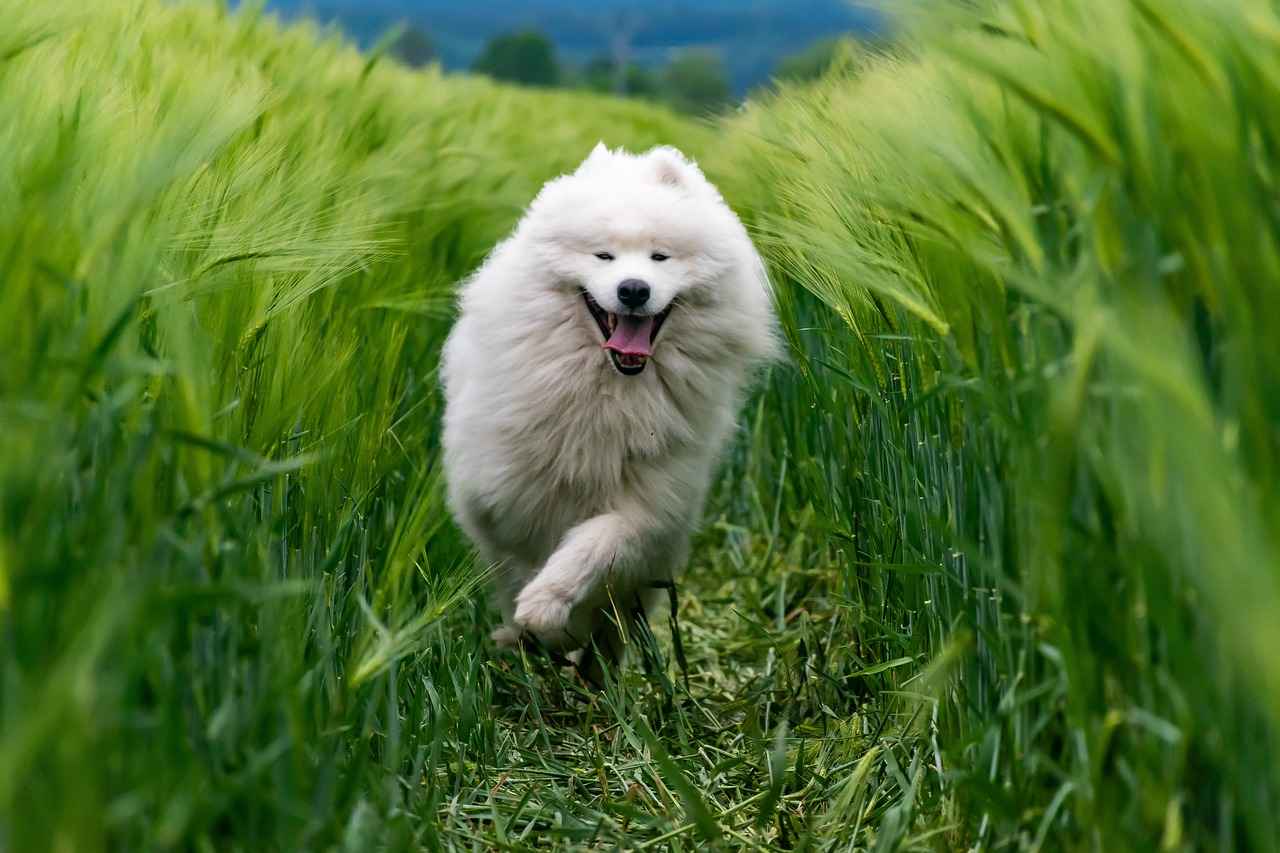
2. German Shepherd
German Shepherds are recognized as one of the most versatile and intelligent dog breeds, making them a popular choice for various working roles. Their remarkable ability to learn and adapt has earned them a place in law enforcement, military service, and as loyal family companions. In this section, we will explore the unique characteristics, history, and training needs of German Shepherds, highlighting why they are considered exceptional guard dogs.
German Shepherds are not only known for their strong bite but also for their remarkable intelligence and loyalty. This breed excels in various roles, including police and military service, where their protective instincts shine. Their ability to assess situations quickly and respond appropriately makes them invaluable in high-stress environments.
The German Shepherd breed was developed in Germany in the late 19th century, primarily for herding and protecting sheep. The breed’s lineage is a combination of various herding dogs, which contributes to their strong bite and protective nature. Over the years, they have evolved into multi-talented working dogs, showcasing their versatility in various roles.
Initially bred for herding, German Shepherds quickly adapted to roles in security and protection due to their intelligence and trainability. Their natural instincts made them ideal for guarding livestock and property.
Today, German Shepherds serve in various capacities, including search and rescue, police work, and as loyal family guardians. Their dedication and ability to bond with humans make them exceptional companions.
Proper training is essential for harnessing a German Shepherd’s protective instincts. Training should focus on obedience, socialization, and specific protection commands to ensure they respond appropriately to threats while remaining well-behaved. Engaging in regular training sessions helps to strengthen the bond between the dog and its owner, enhancing their effectiveness as a guard dog.
In conclusion, German Shepherds are a remarkable breed that excels in various roles due to their intelligence, loyalty, and strong bite. With proper training and socialization, they can be both effective protectors and loving family companions.
2.1. History of German Shepherds
The German Shepherd breed has a rich and fascinating history that dates back to the late 19th century. Developed in Germany, these dogs were initially bred for their herding abilities, specifically to manage and protect sheep. Their origins can be traced to various German herding dogs, which were selectively bred to enhance their strength, intelligence, and trainability.
As the demand for versatile working dogs grew, the German Shepherd quickly transitioned beyond herding. Their intelligent and adaptable nature made them ideal candidates for various roles, including police work, military service, and search and rescue operations. This evolution highlights their remarkable ability to adapt to different tasks while maintaining their protective instincts.
Early Uses
- Initially bred for herding sheep, German Shepherds showcased their natural ability to guard livestock from predators.
- They were employed by farmers to manage flocks, demonstrating their intelligence and strong work ethic.
- As their popularity grew, they were recognized for their potential in security roles, leading to their use in police and military contexts.
Modern Roles
- Today, German Shepherds are extensively used in law enforcement agencies worldwide for their keen sense of smell and ability to follow commands.
- They serve as service dogs, assisting individuals with disabilities, and are often involved in search and rescue missions due to their agility and intelligence.
- Additionally, many families choose German Shepherds as loyal companions and guardians, thanks to their protective nature and strong bond with humans.
In conclusion, the German Shepherd’s evolution from a herding dog to a multifaceted working breed exemplifies their intelligence, strength, and loyalty. Their historical significance continues to shape their roles in modern society, making them one of the most beloved and respected dog breeds globally.
2.1.1. Early Uses
The German Shepherd breed has a rich and diverse history that dates back to the late 19th century. Originally, these dogs were primarily bred for herding sheep in Germany. Their exceptional intelligence and strong work ethic made them invaluable to shepherds who relied on them to manage and protect livestock.
As the demand for versatile working dogs increased, German Shepherds quickly adapted to various roles beyond herding. Their natural instincts and trainability allowed them to excel in tasks such as guarding properties and assisting in search and rescue operations. This adaptability showcased their ability to learn complex commands and perform a variety of functions, which made them highly sought after.
During World War I, the German Shepherd’s reputation as a reliable and courageous companion grew significantly. They were employed by the military for various purposes including messengers, guard dogs, and even as therapy dogs for wounded soldiers. This period solidified their status as one of the most capable breeds for protection and service.
In the years following the war, their popularity soared as they transitioned into civilian life. Families began to recognize their loyalty and protective nature, leading to their use as family pets and guardians. The breed’s intelligence and strong bond with humans made them ideal companions, further enhancing their role in society.
Today, German Shepherds continue to serve in various capacities, including police work, military service, and as service dogs for individuals with disabilities. Their early uses as herders laid the foundation for the incredible versatility and protective instincts that characterize the breed today.
2.1.2. Modern Roles
Modern Roles of German Shepherds
German Shepherds are among the most versatile and capable dog breeds in the world. Their intelligence, loyalty, and strong protective instincts have led them to serve in a variety of important roles in modern society. Below, we explore some of the key functions that these remarkable dogs fulfill today.
- Search and Rescue: German Shepherds are often deployed in search and rescue operations due to their keen sense of smell and ability to navigate challenging terrains. They play a critical role in locating missing persons, whether in urban environments or wilderness settings.
- Police Work: One of the most recognized roles for German Shepherds is in law enforcement. These dogs assist police officers in apprehending suspects, detecting drugs, and even crowd control during public events. Their training allows them to remain calm and focused in high-pressure situations.
- Military Service: German Shepherds have a long history of serving in the military. They are used for various tasks, including scouting, detecting explosives, and providing protection to soldiers in combat zones. Their loyalty and bravery make them invaluable assets in the field.
- Service Dogs: Many German Shepherds are trained as service dogs for individuals with disabilities. They can assist with mobility issues, provide emotional support, and even alert their owners to medical emergencies, showcasing their adaptability and intelligence.
- Family Guardians: Beyond their professional roles, German Shepherds are also cherished family pets. Their protective nature makes them excellent guardians of the home, providing a sense of security and companionship to their families.
In conclusion, the modern roles of German Shepherds extend far beyond their origins as herding dogs. Their versatility and capabilities make them suitable for various tasks, ensuring they remain a vital part of both professional and family settings.
2.2. Training for Protection
Training a German Shepherd for Protection is a vital process that requires careful planning and execution. These dogs are naturally protective and loyal, making them excellent candidates for guarding roles. However, without proper training, their instincts may not be harnessed effectively.
To ensure that a German Shepherd responds appropriately to threats while remaining well-behaved, consistent and positive reinforcement training is essential. Here are some key aspects to consider:
- Understanding the Breed: German Shepherds are intelligent and eager to please, which makes them highly trainable. Their protective instincts can be channeled into appropriate behaviors through structured training.
- Socialization: Early socialization is crucial. Exposing a German Shepherd to various environments, people, and other animals helps them develop confidence and reduces the likelihood of fear-based aggression.
- Obedience Training: Basic obedience commands such as “sit,” “stay,” and “come” form the foundation of any protection training. A well-trained dog is more likely to listen to commands in high-pressure situations.
- Protection Training: Once basic obedience is established, protection training can begin. This includes teaching the dog to alert their owner to potential threats and to respond appropriately, whether that means barking or standing their ground.
- Controlled Aggression: It’s important to teach the dog to exhibit controlled aggression. This means they should only show aggression when commanded or when they perceive a legitimate threat.
- Regular Practice: Training should be a continuous process. Regular practice helps reinforce learned behaviors and keeps the dog mentally stimulated.
In conclusion, proper training is essential for harnessing a German Shepherd’s protective instincts. By focusing on socialization, obedience, and controlled aggression, owners can ensure that their dogs respond appropriately to threats while remaining well-behaved companions. With dedication and consistency, a German Shepherd can become a loyal protector and a beloved family member.
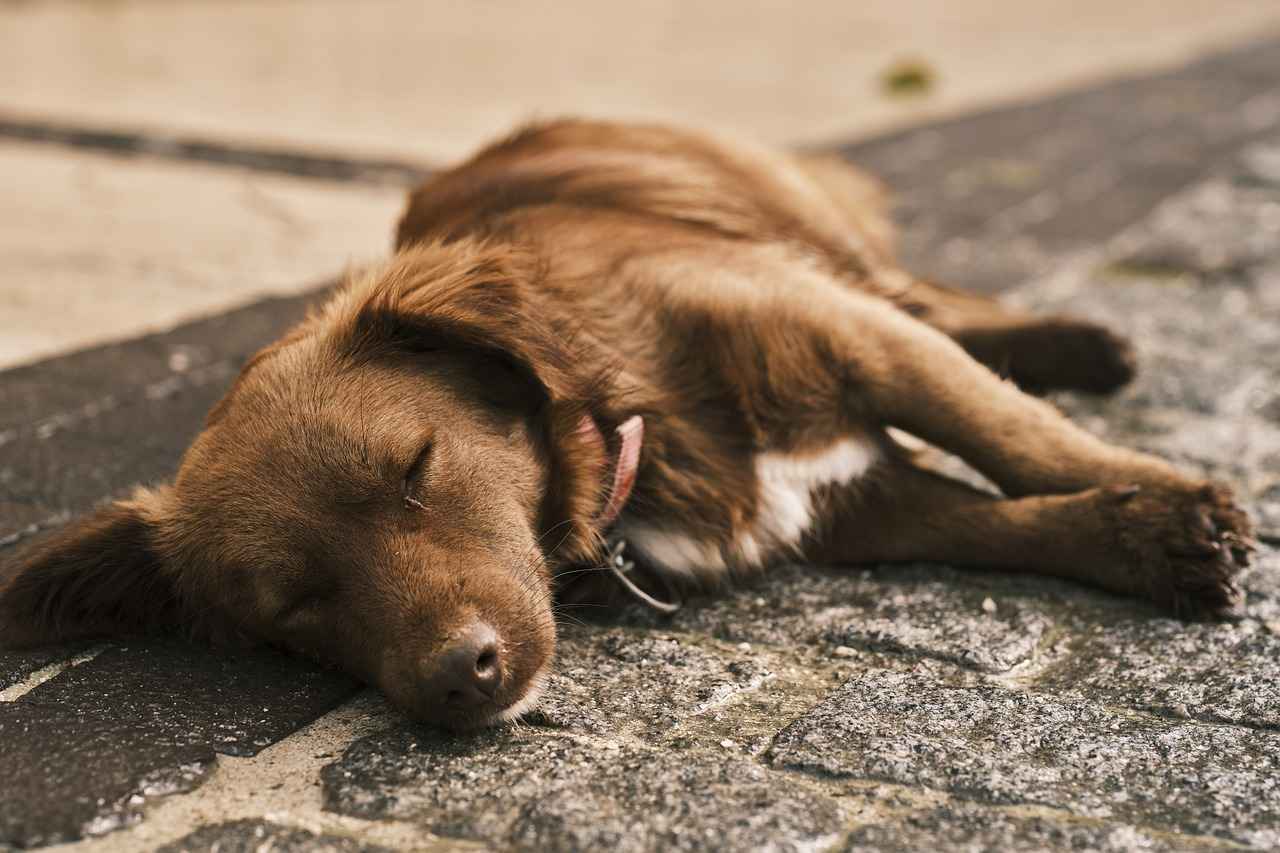
3. American Pit Bull Terrier
The American Pit Bull Terrier is a breed often surrounded by controversy and misunderstanding. Despite their reputation, these dogs are known for their loyalty and affection towards their families. With proper training and socialization, they can become not only loving companions but also effective guard dogs.
3.1. Temperament and Training
American Pit Bull Terriers are characterized by their intelligence and energy. When raised in a nurturing environment, they display a gentle demeanor, making them great family pets. However, it is essential to provide them with consistent training and socialization from an early age to ensure they develop into well-rounded adults. Proper training helps channel their natural instincts into positive behaviors.
3.2. Bite Force Comparison
One of the most notable features of the American Pit Bull Terrier is its strong bite force, which measures approximately 235 PSI (pounds per square inch). This bite force is among the highest of all dog breeds, making them capable of providing significant protection. However, it is crucial to remember that a dog’s behavior is influenced more by its training and upbringing than by its physical attributes alone.
3.3. The Importance of Responsible Ownership
Owning an American Pit Bull Terrier comes with the responsibility of ensuring their training and socialization needs are met. Engaging in regular exercise and mental stimulation is vital to prevent behavioral issues. Additionally, responsible ownership includes educating others about the breed to dispel myths and promote understanding.
3.4. Conclusion
In summary, the American Pit Bull Terrier is a breed that, when trained and socialized correctly, can serve as an excellent guard dog. Their powerful bite and loyal disposition make them well-suited for protection roles, while their loving nature allows them to be cherished family members.
3.1. Temperament and Training
The American Pit Bull Terrier is often misunderstood due to misconceptions surrounding its breed. However, these dogs are known for their gentle and loving nature when raised in a nurturing environment. With the right training, they can transform into loyal protectors of their families, showcasing their innate ability to bond deeply with humans.
It is essential to understand that the temperament of a Pit Bull is significantly influenced by socialization and training. Early exposure to various environments, people, and other animals can help cultivate a well-rounded personality. A well-trained Pit Bull is not only a reliable guardian but also a playful and affectionate companion.
Training Techniques
- Positive Reinforcement: Utilizing treats and praise encourages desired behaviors and strengthens the bond between the dog and owner.
- Consistency: Regular training sessions help reinforce commands and establish clear expectations.
- Socialization: Introducing the dog to different situations and environments can help reduce anxiety and promote confidence.
Moreover, engaging in activities such as obedience training and agility exercises can further enhance their skills and provide mental stimulation. This not only aids in developing discipline but also helps channel their energy positively.
In conclusion, with dedicated training and socialization, the American Pit Bull Terrier can thrive as a gentle guardian and a cherished family member. Their strong protective instincts, combined with a loving demeanor, make them an excellent choice for families seeking a devoted companion.
3.2. Bite Force Comparison
Understanding the Bite Force of the American Pit Bull Terrier
The American Pit Bull Terrier is often recognized for its remarkable strength and loyalty. With a bite force of approximately 235 PSI, it ranks among the most powerful breeds in the canine world. This impressive bite force not only signifies physical strength but also plays a crucial role in the dog’s ability to serve as an effective guard dog.
Why is Bite Force Important?
Bite force is a critical factor in determining a dog’s suitability for protection roles. A higher PSI (pounds per square inch) indicates a stronger grip, which can be essential in guarding situations. The American Pit Bull Terrier, with its robust jaw structure, is well-equipped to deter potential threats.
Temperament and Training
Despite common misconceptions, the American Pit Bull Terrier is not inherently aggressive. With proper training and socialization, these dogs can exhibit a gentle and loving nature while still being effective protectors. Training should focus on reinforcing positive behaviors and ensuring the dog understands its role within the family unit.
Comparison with Other Breeds
| Breed | Bite Force (PSI) | Guarding Ability |
|---|---|---|
| American Pit Bull Terrier | 235 | Excellent |
| Rottweiler | 328 | Outstanding |
| German Shepherd | 238 | Exceptional |
| Doberman Pinscher | 245 | Very Good |
Conclusion
In conclusion, the American Pit Bull Terrier’s bite force of 235 PSI underscores its potential as a guard dog. When paired with the right training and socialization, these dogs can be both loving companions and formidable protectors. Understanding their capabilities and proper training methods can help maximize their effectiveness in guarding roles.
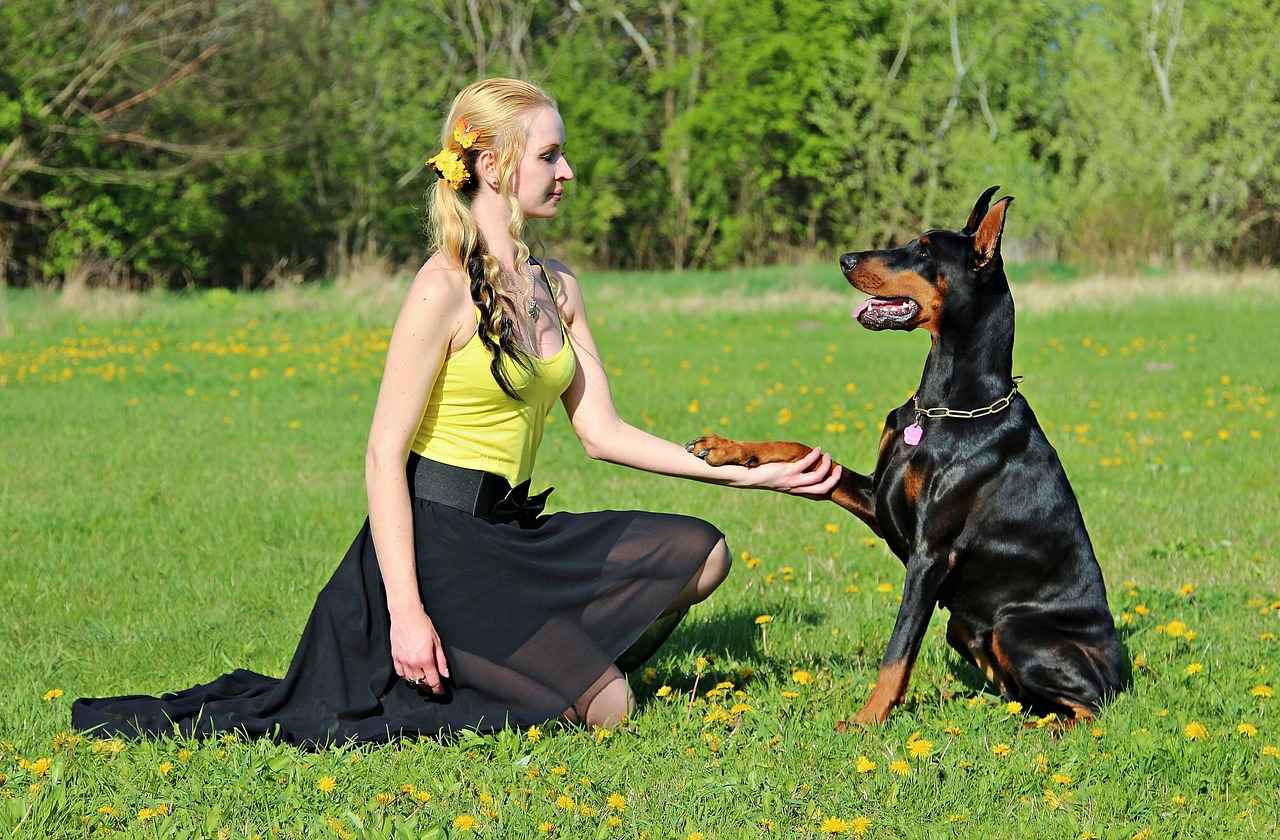
4. Doberman Pinscher
Doberman Pinschers are highly regarded for their intelligence and loyalty, making them one of the most sought-after breeds for personal protection. Their combination of physical prowess and a keen sense of awareness equips them to serve as exceptional guard dogs.
With a bite force that can exceed 600 PSI, Dobermans are not only powerful but also agile and quick, allowing them to respond effectively to potential threats. Their protective instincts are deeply ingrained, making them naturally inclined to guard their families and homes.
- Physical Attributes: Doberman Pinschers are medium to large dogs with a sleek, muscular build. Their short coat requires minimal grooming, and their striking appearance often commands respect.
- Temperament: They are known for their alertness and intelligence, making them highly trainable. A well-trained Doberman is both a loving companion and a vigilant protector.
- Social Behavior: While they can be wary of strangers, Dobermans are affectionate with their families, often forming strong bonds with their owners.
Early socialization is crucial for Doberman Pinschers. Exposing them to various environments, people, and other animals helps them develop a balanced temperament. Consistent training is essential to harness their protective instincts while ensuring they remain well-mannered.
Professional training programs can be beneficial, focusing on obedience and protection skills. These programs help Dobermans learn to distinguish between real threats and normal situations, which is vital for their role as guard dogs.
In conclusion, Doberman Pinschers are not only loyal companions but also formidable protectors. Their intelligence, combined with proper training and socialization, makes them an excellent choice for families seeking a reliable guard dog.
4.1. Characteristics of Dobermans
Doberman Pinschers are remarkable dogs, known for their agility, intelligence, and loyalty. Their protective instincts make them a top choice for families and individuals seeking a reliable guard dog. With an impressive combination of strength and speed, Dobermans are not only effective protectors but also affectionate companions.
One of the most notable characteristics of Dobermans is their alertness. They possess a keen sense of awareness, allowing them to detect potential threats quickly. This vigilance is paired with a strong desire to protect their owners, making them naturally suited for security roles. Their muscular build and athleticism contribute to their ability to respond swiftly to any danger.
In addition to their physical attributes, Dobermans are highly trainable due to their intelligence. They thrive on mental stimulation and require consistent training to harness their protective instincts effectively. Early socialization is crucial, as it helps them develop a balanced temperament and ensures they are well-adjusted around people and other animals.
To illustrate their characteristics, consider the following table:
| Characteristic | Description |
|---|---|
| Alertness | Highly aware of their surroundings, making them excellent watchdogs. |
| Intelligence | Quick learners who excel in obedience training and commands. |
| Strength | Powerful and agile, capable of deterring intruders effectively. |
| Loyalty | Deeply devoted to their families, often forming strong bonds. |
In conclusion, Dobermans are a breed that embodies both strength and loyalty. Their unique combination of physical prowess and intelligent behavior makes them exceptional guardians. With the right training and socialization, they can become not only effective protectors but also loving family members.
4.2. Socialization and Training
To ensure that Doberman Pinschers develop into well-rounded and effective guard dogs, early socialization and training are essential. This breed is known for its loyalty, intelligence, and protective instincts, but without proper guidance, these traits can manifest in undesirable ways.
Socialization should begin as early as possible, ideally when the Doberman is a puppy. Exposing them to a variety of people, environments, and other animals helps to cultivate a balanced temperament. This process allows the dog to learn how to respond appropriately to different situations, reducing the likelihood of fear-based aggression.
In addition to socialization, consistent training is crucial. Dobermans are highly intelligent and eager to please, which makes them receptive to learning commands and obedience skills. Utilizing positive reinforcement techniques, such as treats and praise, can enhance their learning experience. Here are some key training aspects to focus on:
- Basic Obedience: Teach commands such as sit, stay, come, and heel. These foundational commands are vital for control.
- Impulse Control: Training should include exercises that promote patience and self-control, particularly around distractions.
- Protection Training: For those interested in having their Doberman serve as a guard dog, specialized training can help them learn how to assess threats and respond appropriately.
Furthermore, ongoing training should continue throughout the dog’s life. Regular practice not only reinforces learned behaviors but also strengthens the bond between the dog and its owner. Engaging in activities like obedience classes or agility training can provide mental stimulation and keep the dog active.
In conclusion, the combination of early socialization and consistent training is vital for Doberman Pinschers. It ensures they develop a balanced temperament and the necessary skills to be effective guardians without becoming overly aggressive or anxious.
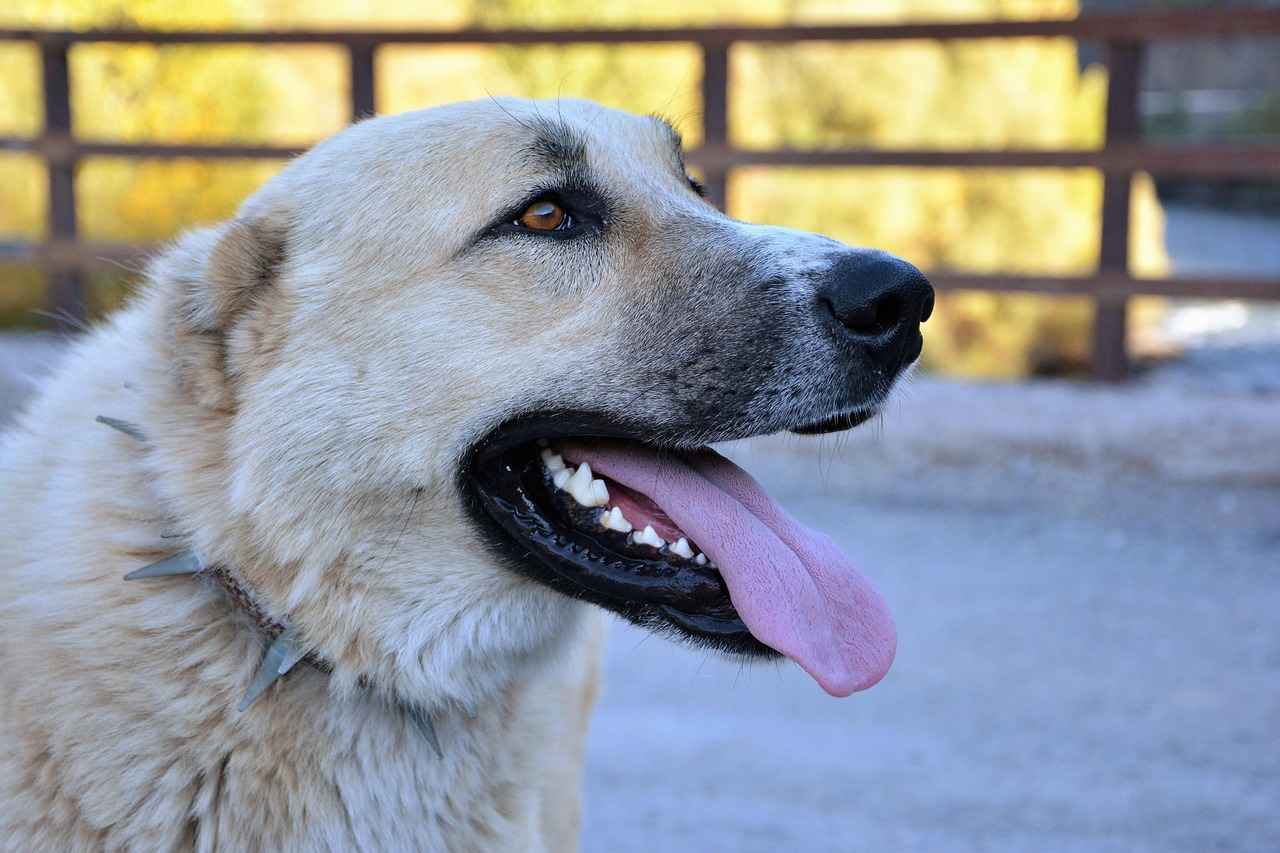
5. Bullmastiff
Bullmastiffs are impressive dogs that combine strength, loyalty, and a protective nature, making them exceptional guardians for homes and families. Known for their powerful build and strong bite force, these dogs have become a popular choice for those seeking reliable protection.
Bullmastiffs are a crossbreed between Bulldogs and Mastiffs, developed in the 19th century to guard estates and catch poachers. Their history as guard dogs is evident in their natural instincts and physical attributes.
These dogs are large and muscular, with males typically weighing between 110 to 130 pounds. Their bite force can reach up to 1,000 PSI, making them one of the strongest breeds in terms of bite strength. This formidable force serves as a significant deterrent to potential intruders.
Despite their imposing size and strength, Bullmastiffs are often referred to as gentle giants. They are known for their affectionate nature, especially towards their families. This duality makes them both protective and loving companions, capable of forming deep bonds with their owners.
Proper training and socialization are crucial for Bullmastiffs. Early exposure to various environments, people, and other animals helps them develop a balanced temperament. They respond well to consistent training methods and positive reinforcement, ensuring they can differentiate between genuine threats and normal situations.
Like all breeds, Bullmastiffs are prone to certain health issues, including hip dysplasia and heart conditions. Regular veterinary check-ups and a healthy diet can help mitigate these risks, ensuring they lead a long and healthy life.
In summary, Bullmastiffs are not only powerful protectors but also affectionate family members. Their unique combination of strength and gentleness makes them an ideal choice for those seeking a loyal guardian. With proper training and care, they can thrive in a family environment while providing the protection needed.
5.1. Physical Attributes
Bullmastiffs are renowned for their impressive physical attributes, making them one of the most formidable breeds in the realm of guard dogs. Their large and muscular build not only contributes to their striking appearance but also enhances their protective capabilities. These dogs typically weigh between 100 to 130 pounds and stand about 24 to 27 inches tall at the shoulder. Their powerful frame is complemented by a broad head and a strong jaw, which is essential for their impressive bite force.
One of the most remarkable features of the Bullmastiff is its bite force, which can reach an astonishing 1,000 PSI. This immense strength serves as a significant deterrent to potential intruders, making them an ideal choice for home protection. The combination of their size and strength allows them to effectively guard properties while instilling a sense of security in their owners.
Despite their intimidating stature, Bullmastiffs are often referred to as gentle giants. They possess a calm demeanor and are known for their loyalty and affection towards their families. This duality makes them not only excellent protectors but also loving companions. Their natural instincts to protect their loved ones are balanced by their gentle nature, making them suitable for households with children.
- Weight: 100 – 130 lbs
- Height: 24 – 27 inches
- Bite Force: Up to 1,000 PSI
In conclusion, Bullmastiffs are a unique breed that embodies strength and gentleness. Their physical attributes, combined with their protective instincts, make them exceptional guard dogs. Proper training and socialization are essential to ensure that they develop into well-rounded companions, capable of providing both protection and affection.
5.2. Gentle Giants
Bullmastiffs, often referred to as gentle giants, possess a unique blend of strength and tenderness that makes them exceptional companions for families. Despite their imposing size and muscular build, these dogs are renowned for their gentle nature and affectionate demeanor, particularly towards children. This duality of being both a formidable protector and a loving family member is what sets Bullmastiffs apart from many other breeds.
Originating from a mix of English Mastiffs and Bulldogs, Bullmastiffs were initially bred in the 19th century for the purpose of guarding estates and protecting game from poachers. Their history as guardians has equipped them with a strong protective instinct, yet they have also retained a sweet disposition that endears them to their families. This balance makes them ideal for households looking for both security and companionship.
One of the most notable characteristics of Bullmastiffs is their calm demeanor. They are typically not aggressive unless provoked, and their natural instincts drive them to be watchful and protective without unnecessary hostility. This makes them suitable for families with children, as they tend to be patient and gentle, often forming strong bonds with the youngest members of the household.
Furthermore, Bullmastiffs thrive on human interaction. They are known to be loyal and affectionate, often seeking out their owners for companionship. Regular socialization and training are essential to ensure that their protective instincts are well-directed and that they remain well-mannered. With the right guidance, Bullmastiffs can be not only excellent guardians but also beloved family pets.
In conclusion, Bullmastiffs exemplify the term “gentle giant.” Their combination of strength and affection makes them a unique breed that can provide both protection and love to families. If you’re considering adding a Bullmastiff to your home, prepare for a loyal friend who will not only guard your property but also shower you with affection.

6. Belgian Malinois
Belgian Malinois are highly regarded for their agility, intelligence, and versatility, making them one of the top choices for police and military roles. These dogs possess a remarkable combination of strength and speed, which allows them to excel in various demanding environments.
Belgian Malinois are medium-sized dogs with a well-proportioned and athletic build. Their short coat is typically fawn with a black mask, which not only adds to their striking appearance but also aids in their camouflage during operations. These dogs are known for their high energy levels and require regular exercise to stay healthy and mentally stimulated.
One of the standout features of the Belgian Malinois is their intelligence. This breed is known for its ability to learn commands quickly and effectively. Their trainability makes them ideal candidates for various tasks, from search and rescue to detection work. With proper training, they can be taught to respond to complex commands and perform intricate tasks.
Due to their strong bite and quick response time, Belgian Malinois are frequently used in law enforcement. They are trained to apprehend suspects, detect drugs, and even locate explosives. Their protective instincts and loyalty to their handlers make them invaluable assets in high-pressure situations.
While Belgian Malinois are often seen in professional settings, they can also make excellent family pets. Early socialization is crucial to ensure they develop a balanced temperament. With the right training and attention, they can be affectionate companions, known for their loyalty and protective nature towards their families.
In summary, the Belgian Malinois stands out as a versatile and intelligent breed that excels in both professional and family settings. Their strong bite and quick reflexes make them exceptional guard dogs, while their affectionate nature allows them to bond closely with their families. Proper training and socialization are key to unlocking their full potential.
6.1. Working Dog Heritage
Originally bred for herding, the Belgian Malinois has proven to be an incredibly versatile breed, adapting seamlessly to various demanding roles. These dogs are not just exceptional herders; they have also emerged as indispensable assets in law enforcement and military operations around the globe. Their intelligence, agility, and strong protective instincts make them highly sought after for tasks that require quick decision-making and physical prowess.
Historically, the Belgian Malinois was developed in the late 19th century in Belgium, primarily for herding sheep. Their herding background contributes to their natural drive and ability to work closely with humans. This breed’s keen sense of observation and responsiveness to commands are traits that have been honed over generations, making them ideal candidates for various working roles.
In modern contexts, Belgian Malinois are frequently utilized as police dogs, search and rescue canines, and service animals. Their ability to perform under pressure is remarkable, showcasing their adaptability beyond herding. For instance, in police work, they are trained for apprehension, detection, and crowd control, demonstrating their multifaceted skills.
Training is crucial for the Belgian Malinois to harness their energy and instincts effectively. It is essential to provide them with structured training that not only enhances their protective abilities but also ensures they remain well-adjusted companions. Their high intelligence level requires mental stimulation, making them excel in advanced training programs.
In conclusion, the Belgian Malinois stands out as a prime example of a working dog that has successfully transitioned from its herding roots to become a top choice for various protection roles. Their strength, intelligence, and adaptability make them a formidable presence in any environment, whether it be on a farm or in a high-stakes security situation.
6.2. Training and Obedience
Training and Obedience for Belgian Malinois
The Belgian Malinois is a breed renowned for its agility, intelligence, and strong work ethic. These characteristics make them exceptional candidates for various roles, particularly in protection and law enforcement. However, to harness their potential effectively, proper training and obedience are paramount.
Belgian Malinois thrive on mental stimulation and physical activity. Without adequate training, their high energy levels can lead to undesirable behaviors, such as excessive barking or destructive tendencies. Therefore, establishing a structured training regimen is essential.
- Positive Reinforcement: Using positive reinforcement techniques, such as treats and praise, can significantly enhance the training experience for both the dog and the handler. This method encourages the Malinois to associate training with positive outcomes.
- Consistency is Key: Consistent commands and routines help the Malinois understand expectations. This breed responds best to clear, concise commands, making it crucial for trainers to remain consistent in their approach.
- Socialization: Early socialization is vital for Belgian Malinois. Exposing them to various environments, people, and other animals can help develop a well-rounded temperament, essential for their role as a guard dog.
Additionally, incorporating obedience training into their routine will ensure that they can follow commands reliably, especially in high-pressure situations. Exercises that focus on impulse control, such as “stay” and “leave it,” are particularly beneficial.
In conclusion, effective training for Belgian Malinois is not just about teaching commands; it’s about channeling their natural instincts into productive behaviors. With the right guidance and training techniques, these dogs can become not only loyal companions but also formidable protectors.
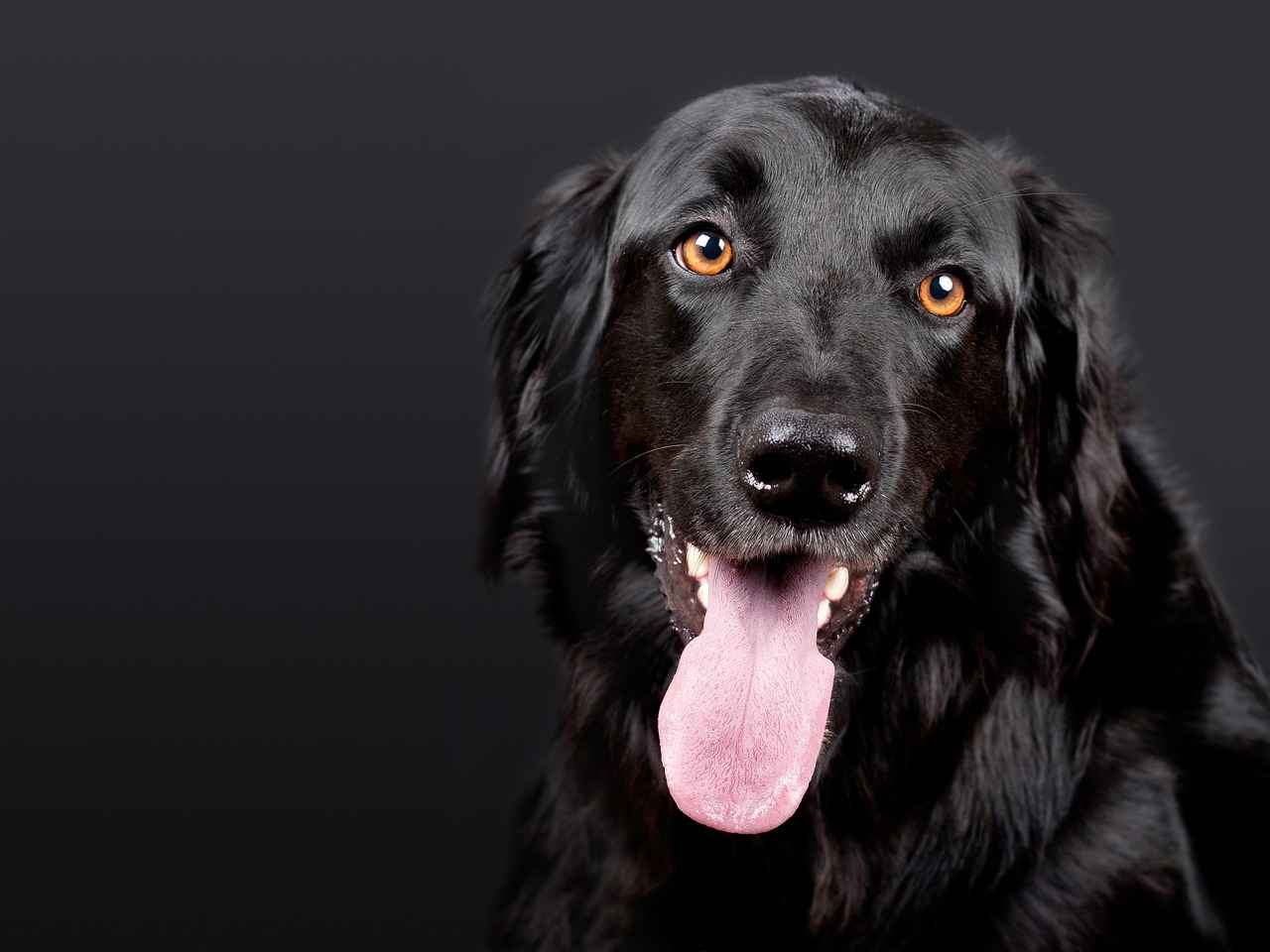
7. Akita
Akitas are not only known for their strength and courage but also for their unwavering loyalty and protective instincts. These magnificent dogs have a rich history and are revered as noble companions, making them an excellent choice for families seeking both protection and affection.
Originating from Japan, Akitas have been celebrated in various cultures for centuries. They are often depicted in art and literature, symbolizing loyalty and fidelity. This breed’s strong bond with their families makes them particularly vigilant guardians.
- Size and Build: Akitas are large, powerful dogs with a muscular build, typically weighing between 70 to 130 pounds.
- Temperament: They are known for their dignity and aloofness towards strangers, making them excellent watchdogs.
- Intelligence: Highly intelligent, Akitas require consistent training and mental stimulation to thrive.
Proper training and early socialization are crucial for Akitas. They need a firm and experienced handler to help them learn appropriate behaviors. Socializing Akitas from a young age can help them become well-adjusted companions, reducing the likelihood of aggression towards unfamiliar people or animals.
Like all breeds, Akitas are prone to specific health issues. Common concerns include hip dysplasia, autoimmune disorders, and certain types of cancer. Regular veterinary check-ups and a balanced diet can help maintain their health and longevity.
Despite their formidable appearance, Akitas are known for their gentle nature with family members. They are often very affectionate with children and can form strong bonds with their human companions. However, they should always be supervised around small children due to their size and strength.
In conclusion, Akitas are truly remarkable dogs, offering a combination of strength, loyalty, and affection. With the right training and socialization, they can be excellent family guardians, providing both protection and companionship.
7.1. Cultural Significance
Originating from Japan, the Akita breed holds a significant place in the hearts of many, not just as pets but as symbols of loyalty and fidelity. Historically, Akitas were bred for hunting large game, showcasing their strength and tenacity. However, their role evolved over the years, and they became known as guardians of families, embodying the virtues of protection and devotion.
In Japanese culture, the Akita is celebrated as a national treasure. The famous tale of Hachiko, an Akita known for his unwavering loyalty to his owner, has become a cornerstone of this breed’s legacy. Hachiko would wait at the train station every day for his owner, even after his passing, demonstrating the profound bond that can exist between humans and dogs. This story has led to the Akita being regarded as a symbol of loyalty and fidelity, inspiring countless books, movies, and even statues throughout Japan.
Furthermore, Akitas are often featured in traditional Japanese art and literature, reinforcing their status as revered companions. In Japan, it is common for families to gift Akita statues to friends and loved ones as a gesture of good fortune and health. This cultural significance extends beyond Japan, as Akitas have gained popularity worldwide, often seen as protectors and loyal companions in various households.
To maintain their cultural heritage, it is essential for Akita owners to understand the breed’s characteristics and training needs. Proper socialization and training are crucial to ensure that these majestic dogs can fulfill their role as both family protectors and loving companions.
In conclusion, the Akita’s rich cultural history and symbolism of loyalty make it a breed that is not only admired for its physical prowess but also cherished for its deep emotional connections with humans.
7.2. Training for Family Protection
Training for Family Protection is crucial for breeds like the Akita, as it ensures they can effectively safeguard their families while also being well-adjusted companions. Akitas are known for their strong loyalty and protective instincts, making them excellent guardians. However, without proper training and socialization, these powerful dogs can become overly protective or even aggressive.
To begin with, it is essential to start training at a young age. Early socialization helps Akitas become familiar with different environments, people, and other animals. This exposure is vital in preventing fear-based aggression and ensures that they can distinguish between real threats and normal situations.
Moreover, consistent and positive reinforcement training methods should be employed. This approach not only builds trust between the dog and the owner but also encourages good behavior. Commands such as “sit,” “stay,” and “come” are fundamental and should be mastered before moving on to more advanced training.
In addition to basic obedience, teaching the Akita specific protective behaviors can enhance their guarding capabilities. This may include training them to alert you to strangers or to respond to commands that signal when to be protective. However, it is crucial to ensure that they do not become overly aggressive. Training should focus on self-control and appropriate responses to potential threats.
Regular training sessions, ideally with the guidance of a professional trainer experienced in working with large breeds, can significantly improve an Akita’s behavior. These sessions should be engaging and varied to keep the dog motivated and interested.
In conclusion, proper training and socialization are not just beneficial; they are essential for Akitas to thrive as both protectors and loving family members. A well-trained Akita can balance their natural guarding instincts with being a gentle and affectionate companion.
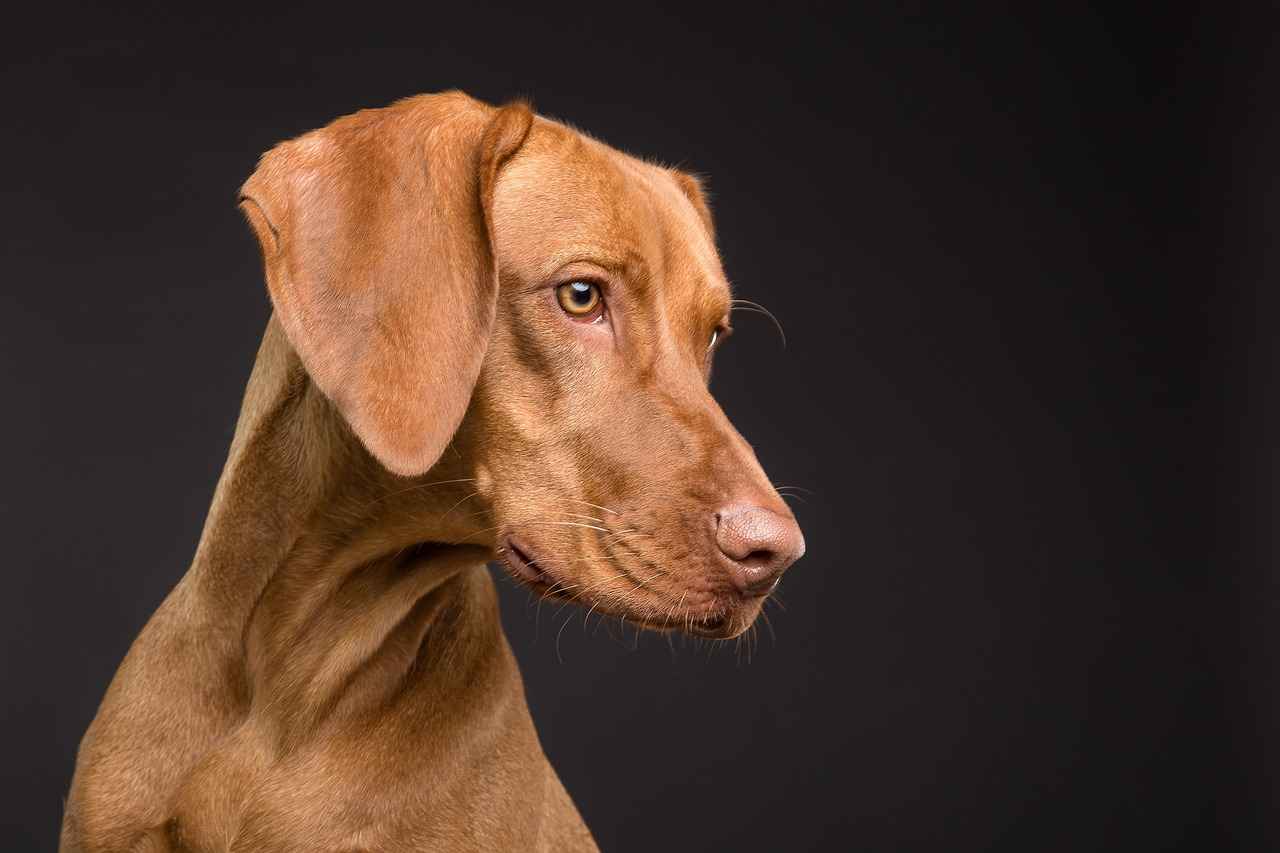
8. Cane Corso
Cane Corsos are impressive dogs known for their size, strength, and protective instincts. As a breed, they possess a powerful bite force, estimated at around 700 PSI, making them formidable guardians. Their loyalty and protective nature are highly valued, especially in family settings where they are seen as both companions and protectors.
Cane Corsos are characterized by their muscular build and confident demeanor. They typically weigh between 88 to 120 pounds and stand about 24 to 28 inches tall at the shoulder. Their short, dense coat comes in various colors, including black, fawn, and brindle. These dogs are known for their intelligence and eagerness to please, which makes them relatively easy to train when consistent techniques are applied.
Training is crucial for Cane Corsos to ensure they develop into well-mannered dogs. Early socialization is essential, as it helps them distinguish between normal situations and potential threats. Positive reinforcement methods work best, promoting a strong bond between the dog and its owner. Obedience training not only enhances their protective instincts but also ensures they are calm and controlled in various environments.
With their natural guarding instincts, Cane Corsos are often chosen as family protectors. They are known to be affectionate with children and can form strong bonds with all family members. However, it is essential to supervise interactions with young children to ensure safety and comfort for both the dog and the child.
Like all breeds, Cane Corsos are prone to specific health issues, including hip dysplasia and certain heart conditions. Regular veterinary check-ups and a balanced diet are vital for maintaining their health. Responsible breeding practices also play a crucial role in minimizing genetic health problems.
In summary, Cane Corsos are powerful and loyal dogs that can serve as excellent guardians for families. Their protective nature, combined with the right training and socialization, makes them well-suited for a variety of roles, from family companions to dedicated protectors. Understanding their needs and characteristics is essential for anyone considering adding a Cane Corso to their home.
8.1. Characteristics and Strength
Cane Corsos are a breed that commands respect and admiration due to their impressive physical attributes and protective instincts. These dogs, with their muscular build and strong presence, are not only known for their loyalty but also for their significant bite force, which averages around 700 PSI. This powerful bite is a testament to their strength and is one of the reasons they are highly regarded as effective guard dogs.
In terms of characteristics, Cane Corsos are large dogs, typically weighing between 90 to 120 pounds. Their robust physique is complemented by a short, dense coat that can come in various colors, including black, fawn, and brindle. These dogs are also known for their intelligence and are often described as being both alert and attentive, making them excellent companions for families looking for protection.
Training plays a crucial role in the development of a Cane Corso’s behavior. Early socialization and obedience training are essential to ensure they grow into well-adjusted adults. Without proper training, their natural protective instincts can lead to unwanted behaviors. It is important for owners to establish themselves as the pack leader to guide their Cane Corso effectively.
Furthermore, Cane Corsos are known to be affectionate with their families, often forming strong bonds with their owners. They are protective of their loved ones and can be wary of strangers, which makes them excellent watchdogs. However, their temperament can vary, so it is crucial to understand their individual personality traits.
In conclusion, the Cane Corso is a powerful breed that combines strength, intelligence, and loyalty. With the right training and socialization, they can be both loving family pets and formidable protectors, making them a popular choice for those seeking a guard dog.
8.2. Importance of Training
Training is essential for Cane Corsos, not only to ensure they are well-behaved but also to help them distinguish between threats and normal situations. These powerful dogs possess a natural instinct to protect their families, but without proper training, this instinct can manifest in undesirable behaviors.
When Cane Corsos are trained effectively, they learn to respond appropriately to various stimuli in their environment. This is crucial because their size and strength can make them intimidating. A well-trained Cane Corso can be a loyal protector while remaining calm and composed in everyday situations.
- Socialization: Early socialization is vital. Introducing a Cane Corso to different people, environments, and other animals helps them develop a balanced temperament. This exposure reduces the likelihood of fear-based aggression.
- Basic Commands: Teaching basic commands such as “sit,” “stay,” and “come” establishes a foundation for obedience. These commands are not only practical but also reinforce the bond between the dog and its owner.
- Positive Reinforcement: Utilizing positive reinforcement techniques, such as treats and praise, encourages good behavior. This method fosters a trusting relationship and motivates the dog to learn.
- Advanced Training: For those interested in enhancing their Cane Corso’s protective abilities, advanced training sessions focusing on guarding techniques can be beneficial. This training helps them understand when to act and when to remain calm.
In conclusion, training a Cane Corso is a lifelong commitment that pays off in the form of a well-adjusted, protective companion. By investing time and effort into their training, owners can ensure their Cane Corsos are not only effective guardians but also loving family members.
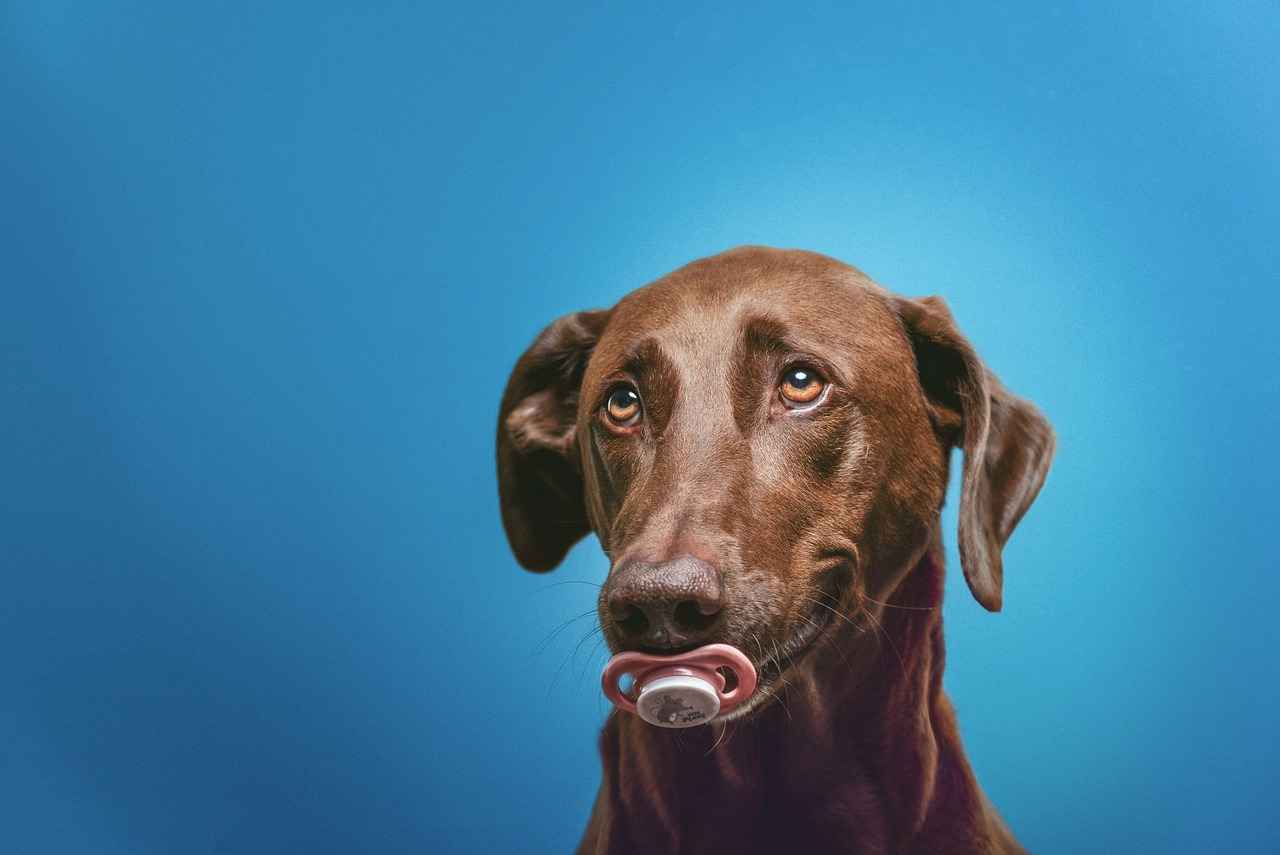
9. Boxer
Boxers are not only known for their playful demeanor but also for their protective nature, making them an ideal choice for families seeking a loyal companion. With a strong bite force, Boxers are equipped to serve as effective guardians while providing affection and companionship.
Boxers are medium-sized dogs with a distinctive, muscular build. Their strong jaws contribute to a powerful bite force, making them formidable protectors. They possess a unique combination of strength and agility, allowing them to be both playful and vigilant.
Boxers typically weigh between 50 to 70 pounds and stand about 21 to 25 inches tall at the shoulder. Their short coat is easy to maintain, and they come in various colors, including fawn and brindle. Their square muzzle and strong jawline are characteristic features that enhance their bite strength.
To ensure Boxers develop into well-rounded pets, early socialization is crucial. Exposing them to various environments, people, and other animals helps balance their protective instincts with friendly behavior. Consistent training reinforces positive behaviors and ensures they respond appropriately to different situations.
Boxers are known for their energetic and playful nature. They are highly affectionate and form strong bonds with their families, often displaying a gentle demeanor with children. Their protective instincts make them wary of strangers, which can be beneficial for home security.
Regular exercise is essential for Boxers to maintain their physical health and mental stimulation. Daily walks, playtime, and training sessions help channel their energy positively. Positive reinforcement training methods work best, as Boxers respond well to encouragement and rewards.
In summary, Boxers are playful yet protective dogs that make excellent family guardians. Their strong bite force, combined with their affectionate nature, ensures they can protect their loved ones while being loyal companions. With proper training and socialization, Boxers can thrive in family settings, providing both security and love.
9.1. Physical Traits
Boxers are not only known for their playful and energetic demeanor but also for their impressive physical attributes that contribute significantly to their role as effective guard dogs. With their athletic build and strong jaws, Boxers possess a unique combination of strength and agility that makes them formidable protectors.
Boxers typically weigh between 50 to 80 pounds and stand about 21 to 25 inches tall at the shoulder. Their muscular frame is complemented by a broad head and a strong jaw, which is critical for their bite force. This breed’s bite force can reach around 230 PSI, making it one of the stronger bites among dog breeds. Such strength is essential when it comes to protecting their families and homes.
In addition to their physical prowess, Boxers are known for their high energy levels and playful nature. This breed requires regular exercise to maintain their health and to channel their energy positively. Daily walks, play sessions, and mental stimulation are vital to keep them happy and well-adjusted. A well-exercised Boxer is not only a better companion but also a more effective guardian.
Furthermore, Boxers are incredibly loyal and protective of their families. Their natural instincts drive them to be vigilant, making them excellent watchdogs. They are often quick to alert their owners to any potential threats, showcasing their protective nature. However, this instinct also means that early socialization and training are crucial. Proper training helps Boxers distinguish between genuine threats and normal situations, ensuring they can be both protective and friendly.
In conclusion, Boxers are a breed that combines strength, agility, and loyalty, making them excellent guard dogs. Their impressive physical traits, coupled with their energetic and affectionate nature, make them not only protective companions but also loving family members.
9.2. Socialization Needs
Socialization Needs of Boxers
Boxers are not only known for their playful nature and athletic build but also for their strong protective instincts. To ensure these instincts are balanced with friendly behavior, it is crucial to focus on early socialization and consistent training.
Socialization is the process of exposing a dog to various environments, people, and other animals. For Boxers, this process should begin as early as possible, ideally during their puppyhood. Here are some key aspects to consider:
- Exposure to Different Environments: Regularly take your Boxer to different places such as parks, busy streets, and pet-friendly stores. This helps them become accustomed to various sights, sounds, and smells.
- Interaction with People: Encourage positive interactions with a variety of people, including children, adults, and seniors. This will help your Boxer develop a friendly demeanor and reduce the likelihood of fear-based aggression.
- Meeting Other Dogs: Arrange playdates with other dogs to help your Boxer learn appropriate social cues. This interaction is vital for developing their social skills and ensuring they are comfortable around other animals.
- Consistent Training: Alongside socialization, consistent training is essential. Use positive reinforcement techniques to teach basic commands and good manners. This will reinforce their protective instincts while ensuring they remain well-behaved.
Proper socialization and training will not only help in balancing your Boxer’s protective instincts but also contribute to their overall well-being. A well-socialized Boxer will be a loyal guardian and a loving family member.
In conclusion, investing time in socialization and training is crucial for Boxers. The right approach will cultivate their friendly nature while allowing them to effectively fulfill their role as protective companions.

10. Great Dane
The Great Dane is often referred to as the “gentle giant” of the dog world. These majestic dogs are not only known for their towering height but also for their gentle nature and affectionate demeanor. Despite their size, they possess a surprisingly strong bite, making them effective guard dogs when the situation calls for it.
Great Danes typically stand between 28 to 34 inches tall and can weigh between 110 to 175 pounds. Their imposing presence alone can deter potential intruders. However, it’s their protective instincts combined with their loyalty that truly make them stand out as guardians of the home.
One of the key aspects that contribute to their effectiveness as guard dogs is their natural instinct to protect their families. Great Danes are known to be vigilant and will alert their owners to any unusual activity. This instinct, paired with proper training, ensures they can differentiate between a genuine threat and a harmless visitor.
Training and Socialization
Training a Great Dane requires patience and consistency. Establishing clear boundaries is essential to ensure that their protective instincts are directed appropriately. Early socialization is crucial to help them develop a balanced temperament. Exposing them to various environments, people, and other animals will help them grow into well-rounded companions.
Conclusion
In summary, the Great Dane is more than just a large dog; they are loyal protectors and loving family members. Their combination of size, strength, and gentle nature makes them unique among guard dogs. With the right training and socialization, they can be both effective guardians and affectionate companions.
10.1. Gentle Giants
Known for their friendly demeanor, Great Danes are often referred to as the “gentle giants” of the dog world. These magnificent dogs not only possess a towering stature but also exhibit a protective nature towards their families. Their affectionate disposition makes them exceptional companions, blending strength with warmth.
Despite their intimidating size, Great Danes are typically gentle and loving. They thrive on human interaction and are known to form strong bonds with their owners. These dogs are particularly good with children, often displaying a playful attitude while also being vigilant guardians.
Great Danes are naturally protective, making them effective guard dogs. Their mere presence can deter intruders, as their size alone commands respect. However, it is important to note that their protective instincts need to be nurtured through proper training and socialization.
Training a Great Dane involves establishing clear boundaries and ensuring they understand their role within the family. Consistent training helps them differentiate between normal situations and potential threats. This not only enhances their guarding abilities but also ensures they remain well-mannered companions.
In summary, Great Danes embody the perfect blend of strength and affection. Their gentle nature, coupled with their protective instincts, makes them ideal family pets. With the right training, they can be both loving companions and vigilant guardians, proving that size does not dictate temperament.
10.2. Training and Boundaries
Training Great Danes effectively requires a thoughtful approach that emphasizes the establishment of clear boundaries. This breed, known for its impressive size and gentle nature, harbors powerful protective instincts that can be directed positively with the right training techniques. Understanding how to channel these instincts is crucial for both the dog’s well-being and the safety of family members and guests.
First and foremost, socialization plays a vital role in a Great Dane’s development. Exposing them to various environments, people, and other animals from a young age helps them become well-adjusted adults. This exposure not only enhances their confidence but also reduces the likelihood of fear-based aggression. Training sessions should be consistent and rewarding, using positive reinforcement to encourage desirable behaviors.
Establishing clear commands is essential in guiding a Great Dane’s behavior. Simple commands such as “sit,” “stay,” and “come” should be taught early on. These commands help the dog understand its place within the family hierarchy, reinforcing boundaries that are vital for their protective instincts to manifest appropriately. Furthermore, incorporating obedience training into their routine ensures that they respond reliably to commands, especially in situations where their protective nature might kick in.
Consistency is key in training. All family members should use the same commands and rules to prevent confusion. Additionally, setting boundaries within the home, such as designated areas where the Great Dane is allowed or not allowed, helps them understand their space and the expectations placed upon them.
In conclusion, training Great Danes involves more than just basic commands; it requires a comprehensive approach that includes socialization, clear communication, and consistent reinforcement of boundaries. By doing so, owners can ensure that their Great Danes grow into well-behaved companions who can protect their families while also being loving and gentle giants.

11. Newfoundland
Newfoundlands are often celebrated for their gentle nature and remarkable strength. These large, fluffy dogs are not only affectionate companions but also effective guardians, thanks to their powerful bite and protective instincts. In this section, we will delve deeper into the unique characteristics and training needs of Newfoundlands, highlighting why they make excellent family pets and reliable protectors.
Newfoundlands are known for their impressive size, often weighing between 100 to 150 pounds. Their thick, water-resistant coat makes them well-suited for colder climates, and their webbed feet help them excel in swimming. These dogs possess a natural instinct to protect their families, often displaying a calm demeanor around children and other pets. Their gentle disposition makes them affectionate companions, while their strength ensures they can defend their loved ones if necessary.
Training a Newfoundland requires patience and consistency. While they are generally eager to please, it is crucial to reinforce their protective instincts without compromising their gentle nature. Socialization from a young age is essential, allowing them to interact with various people and animals. This exposure helps them develop a balanced temperament. Basic obedience training should focus on commands that promote good behavior, ensuring they respond appropriately to any potential threats.
Like all breeds, Newfoundlands are prone to certain health issues, such as hip dysplasia and heart conditions. Regular veterinary check-ups and a balanced diet are vital to maintaining their health. Owners should also ensure that their Newfoundlands receive enough exercise to keep them fit and healthy, as their size can lead to obesity if not managed properly.
In summary, Newfoundlands are a unique blend of gentleness and strength. Their protective instincts, combined with their loving nature, make them ideal family pets. With proper training and socialization, they can thrive in a household setting, providing both companionship and security.
11.1. Unique Traits
Newfoundlands are not only known for their impressive size and strength, but they also possess a remarkable gentle nature that makes them ideal companions for families. These dogs are characterized by their thick, water-resistant coats and webbed feet, allowing them to excel in aquatic environments. Their instincts to protect their loved ones are deeply ingrained, making them suitable for guarding roles despite their gentle demeanor.
One of the most notable traits of Newfoundlands is their calm temperament. They are often described as “gentle giants” due to their loving and patient nature, especially around children. This quality makes them not only excellent family pets but also reliable guardians. Their size alone can deter potential intruders, while their protective instincts ensure they will act if they sense a threat.
Training is essential for Newfoundlands to harness their protective instincts effectively. While they are naturally inclined to protect their families, obedience training helps them understand boundaries and appropriate responses to various situations. Socialization from an early age is also crucial, as it helps them distinguish between genuine threats and everyday occurrences.
Moreover, Newfoundlands are known for their intelligence and eagerness to please, which facilitates the training process. They respond well to positive reinforcement techniques, making training sessions enjoyable for both the dog and the owner. Their ability to learn commands quickly ensures that they can be reliable protectors while maintaining their friendly demeanor.
In summary, Newfoundlands are unique in their combination of strength, loyalty, and gentleness. Their natural protective instincts, paired with proper training and socialization, make them outstanding family guardians. Whether it’s their loving nature or their ability to guard, Newfoundlands truly embody the qualities of a perfect family dog.
11.2. Training for Protection
Training Newfoundlands is a crucial aspect of ensuring these gentle giants can perform their natural protective role while maintaining their friendly demeanor. Newfoundlands are often characterized by their gentle nature and strong instincts to protect their families. However, without proper training, their size and strength can be overwhelming.
To effectively train a Newfoundland for protection, it is essential to focus on the following key areas:
- Socialization: Early exposure to various environments, people, and other animals is vital. This helps Newfoundlands develop a balanced temperament, making them more adaptable and less fearful.
- Positive Reinforcement: Using rewards-based training methods encourages good behavior. Treats, praise, and play can motivate Newfoundlands to learn commands and respond to training cues.
- Basic Obedience Training: Teaching basic commands such as “sit,” “stay,” and “come” is essential. These commands form the foundation for more advanced training and help establish a strong bond between the dog and its owner.
- Protection Training: Once basic obedience is established, training can progress to specific protection skills. This includes teaching the dog to alert their owner to potential threats while remaining calm and controlled.
- Consistency and Patience: Training a Newfoundland requires time and patience. Consistent commands and routines help reinforce learning and build trust.
Moreover, it is important to regularly assess the dog’s behavior and training progress. Engaging in activities such as obedience classes or working with a professional trainer can provide valuable guidance and support.
In conclusion, while Newfoundlands have a natural inclination to protect, proper training is essential to ensure they can balance their protective instincts with their loving nature. With the right approach, Newfoundlands can become both effective guardians and affectionate family pets.
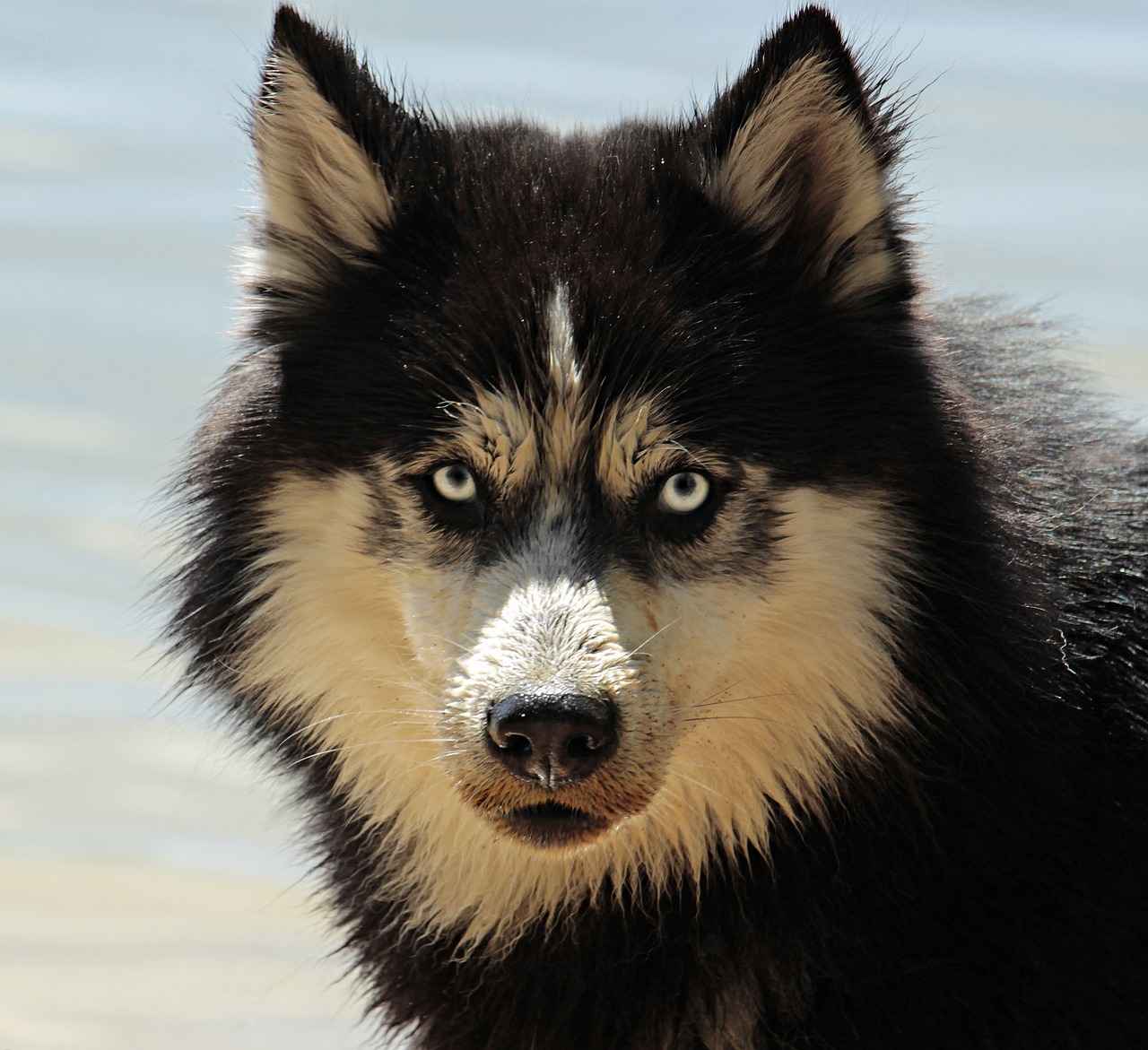
12. Conclusion
Choosing the right guard dog is a crucial decision for any family seeking protection and companionship. It involves a deep understanding of each breed’s strengths, training needs, and overall compatibility with your household. With numerous breeds available, each with its unique characteristics, it’s essential to consider what qualities are most important to you and your family.
First and foremost, you should assess the protective instincts of the breed. Some dogs, like Rottweilers and German Shepherds, are naturally inclined to guard their territory and family. Their history of working in security roles makes them reliable choices. On the other hand, breeds like the American Pit Bull Terrier and Doberman Pinscher may require more dedicated training to channel their protective instincts effectively.
Additionally, consider the size and energy levels of the dog. Larger breeds, such as Bullmastiffs and Great Danes, can be intimidating to intruders due to their sheer size, while smaller breeds may be less effective as deterrents. However, smaller dogs can still be excellent companions and alert you to potential threats.
Training is another critical factor. Some breeds are more trainable than others, making it easier to instill good behavior and obedience. For instance, Belgian Malinois are known for their intelligence and responsiveness to training, while others may require more patience and consistency.
Finally, consider your family’s lifestyle. Some breeds thrive in active households, while others may be more suited to a calm environment. It’s essential to match the dog’s temperament with your family’s dynamics to ensure a harmonious living situation.
In conclusion, selecting the right guard dog involves careful consideration of various factors, including temperament, training, and family compatibility. Each breed offers unique qualities that can provide both protection and companionship. By understanding these aspects, you can make an informed decision that ensures a safe and loving environment for your family.
Frequently Asked Questions
- What is the strongest guard dog breed?
The Rottweiler is often considered one of the strongest guard dog breeds due to its impressive bite force and loyal nature. However, breeds like the Bullmastiff and Cane Corso also boast significant strength and protective instincts.
- How important is training for guard dogs?
Training is crucial for guard dogs. Proper training helps to harness their protective instincts while ensuring they behave appropriately around family and friends. Without training, even the strongest dogs can become unpredictable.
- Can any dog be a good guard dog?
While many breeds have the potential to be good guard dogs, characteristics such as loyalty, strength, and protectiveness are essential. Breeds like the German Shepherd, Doberman Pinscher, and American Pit Bull Terrier are particularly known for these traits.
- Are guard dogs safe for families?
Yes, many guard dog breeds are safe for families when properly trained and socialized. Breeds like the Boxer and Newfoundland are known for their protective yet gentle nature, making them great companions for children.
- What should I consider before getting a guard dog?
Before getting a guard dog, consider factors such as the breed’s temperament, training needs, and your living situation. It’s essential to choose a breed that fits your lifestyle and can be properly trained to ensure a balanced environment.
